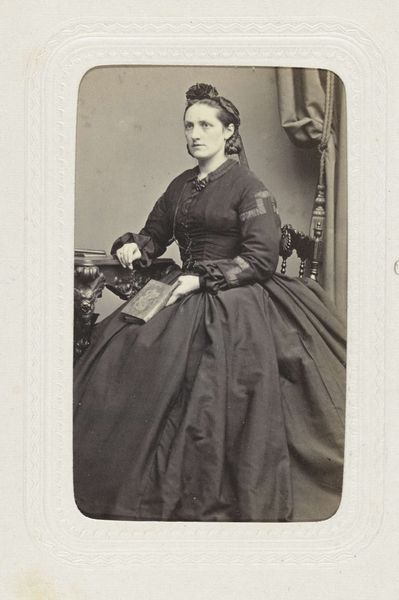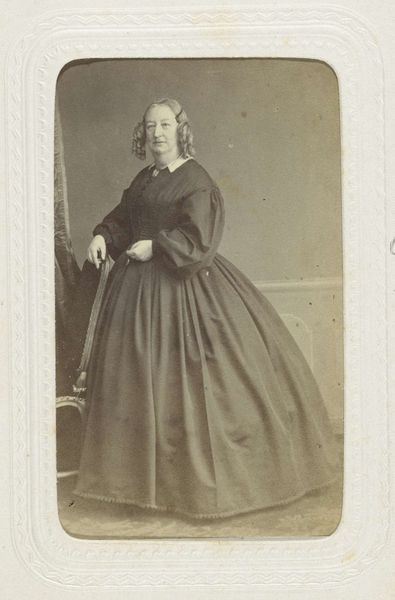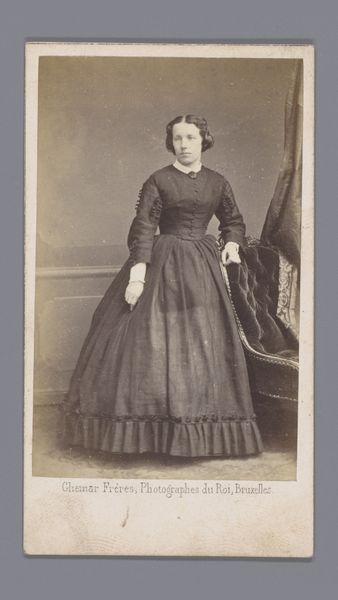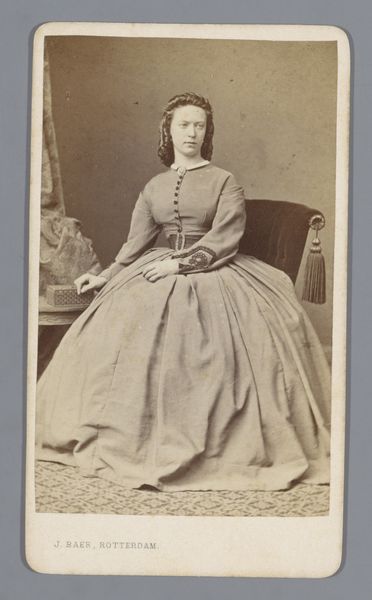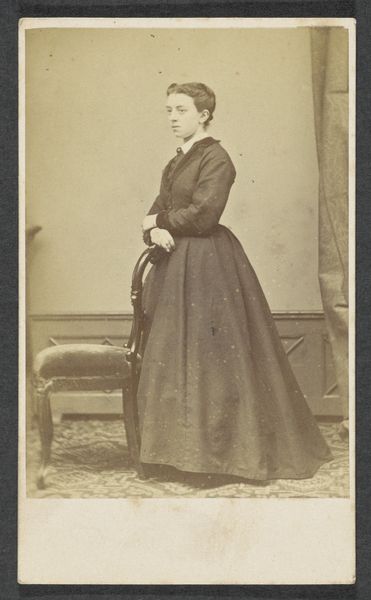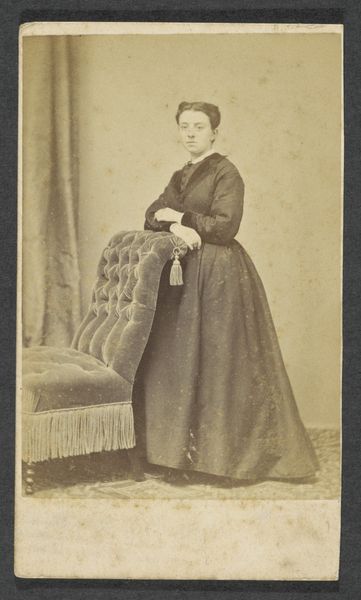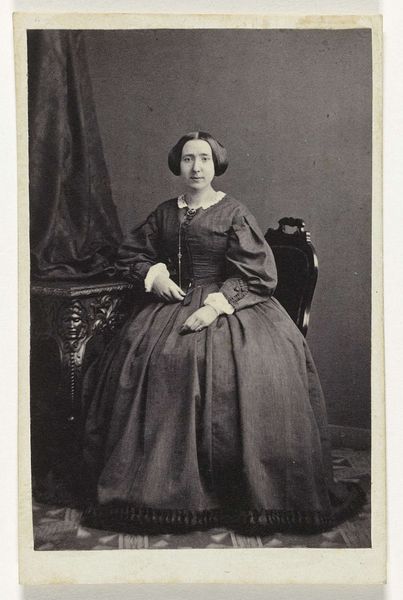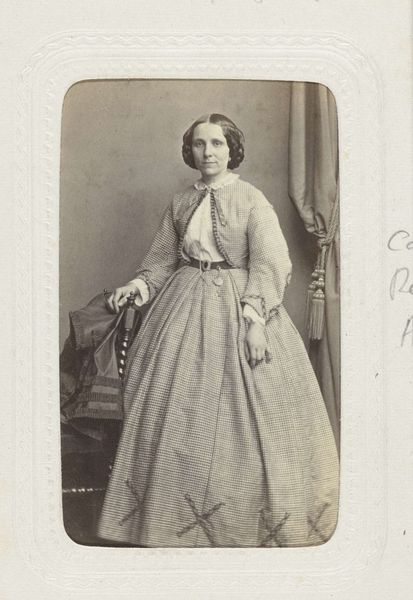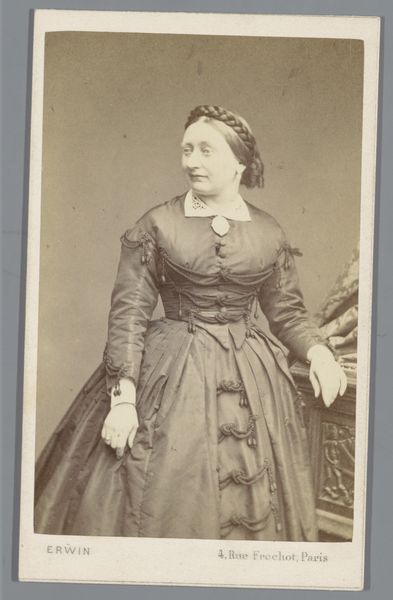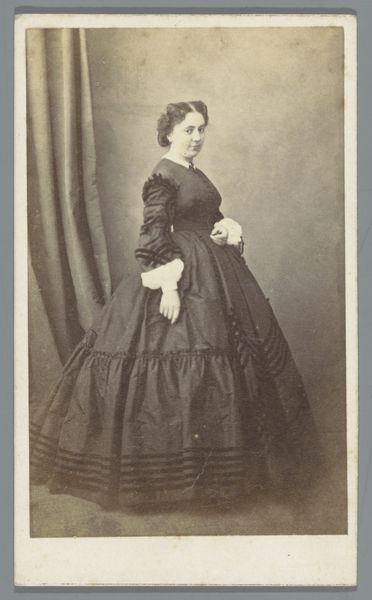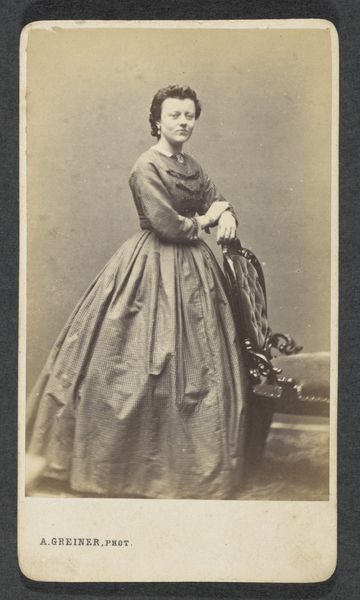
photography, gelatin-silver-print
#
portrait
#
16_19th-century
#
archive photography
#
photography
#
historical photography
#
gelatin-silver-print
#
19th century
#
realism
Dimensions: height 80 mm, width 54 mm, height 296 mm, width 225 mm
Copyright: Rijks Museum: Open Domain
Editor: Here we have, from around the 1860s, "Studioportret van een vrouw gekleed in het zwart" – a gelatin silver print by Wegner & Mottu currently held at the Rijksmuseum. The woman's expression is so stern, it’s hard to gauge what’s going on. What do you make of this image? Curator: The sobriety certainly catches the eye. These studio portraits served a specific social function in the 19th century, offering a burgeoning middle class a new form of commemoration and social display. Consider how photography democratized portraiture previously exclusive to the wealthy. This image speaks to that shift, the accessibility but also the continued conventions of formal representation. Editor: So, it’s less about personal expression and more about adhering to a social expectation? Curator: Partly. It's about constructing a particular identity for public consumption. The somber attire and composed posture, framed by the studio setting, all point to a carefully curated performance. Can you see hints of aspiration in the framing, or elements of power through her seated, steady form? Editor: Yes, there’s definitely a sense of considered dignity. It's interesting how the clothing, the dark dress almost consuming her frame, plays into this narrative. There's very little ornamentation distracting the gaze. Curator: Indeed. The limited palette reinforces the seriousness of the occasion. It’s a fascinating look into the aspirations and social constraints of the era, and photography’s role in shaping that. How do you think photographic realism impacted portraiture overall? Editor: It brings up how powerful photography has been in the history of portraiture, which still impacts representation now. Thanks for shining a light on the historical function of this piece, beyond the surface. Curator: Absolutely, considering social function is so essential for understanding art’s evolving relationship to the public, isn't it?
Comments
No comments
Be the first to comment and join the conversation on the ultimate creative platform.

